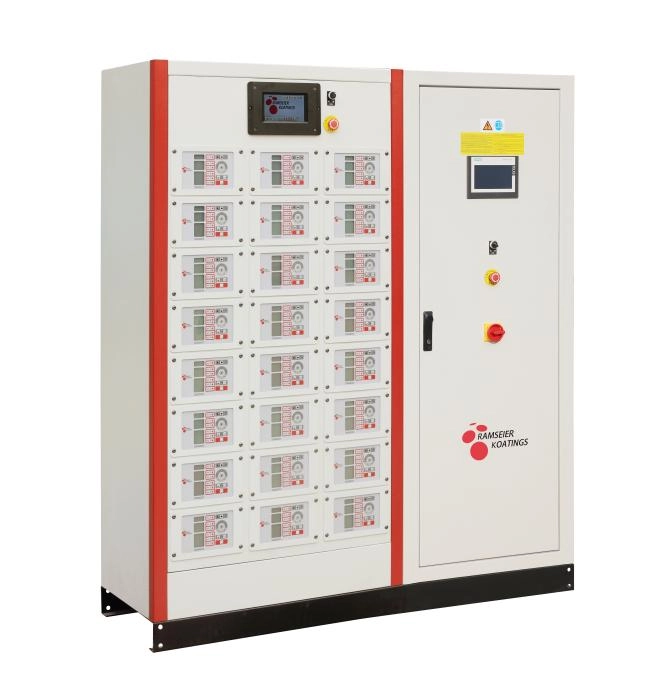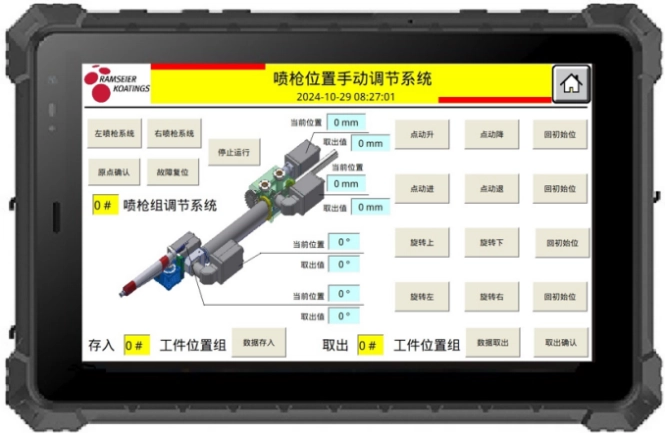Content Menu
● Introduction
● Understanding Basic Control Systems
>> What Are Basic Control Systems?
>> Characteristics of Basic Control Systems
● What Are Integrated Control Systems?
>> Key Features of Integrated Control Systems
● Why Integrated Control Systems Are Superior
>> 1. Enhanced Operational Efficiency
>> 2. Comprehensive Security and Monitoring
>> 3. Scalability and Flexibility
>> 4. Improved Data Utilization and Decision-Making
>> 5. Cost-Effectiveness Over Time
>> 6. Simplified Troubleshooting and Maintenance
● Comparing Integrated and Basic Control Systems
● Applications of Integrated Control Systems
>> Industrial Automation
>> Security Management
>> Building Management
>> Healthcare and Pharmaceuticals
● Challenges and Considerations
● Conclusion
● Frequently Asked Questions (FAQs)
Introduction
Control systems are fundamental to the operation and management of modern industrial, commercial, and security environments. As technology advances, businesses and facilities face the choice between basic control systems and integrated control systems. While basic systems provide essential functionalities, integrated control systems offer a more comprehensive, scalable, and efficient solution. This article explores the key factors that make integrated control systems superior to basic control systems, examining their features, benefits, and ideal applications.

Understanding Basic Control Systems
What Are Basic Control Systems?
Basic control systems, often referred to as standalone or simple automation systems, are designed to control individual machines or processes independently. They typically operate in isolation without interconnection to other systems or centralized management platforms.
Characteristics of Basic Control Systems
- Simplicity: Basic systems are straightforward to install and operate, usually requiring minimal training.
- Cost-Effectiveness: Due to their limited scope and functionality, these systems are generally less expensive upfront.
- Limited Integration: They function independently and do not communicate with other systems such as surveillance, alarms, or enterprise management software.
- Ideal Use Cases: Suitable for small businesses, single-location operations, or facilities with minimal automation needs.
What Are Integrated Control Systems?
Integrated control systems unify multiple control components and subsystems into a single, cohesive platform. This integration enables centralized management, real-time monitoring, and enhanced operational efficiency across various processes and locations.
Key Features of Integrated Control Systems
- Centralized Management: Operators can monitor and control all connected systems from one interface, facilitating streamlined operations.
- Advanced Functionality: Integration with video surveillance, alarm systems, and enterprise resource planning (ERP) software enhances security and operational insight.
- Scalability: These systems are designed to grow with organizational needs, easily accommodating additional devices and capabilities.
- Data Convergence: Integrated systems consolidate data from various sources, supporting better decision-making from the plant floor to executive management.
Why Integrated Control Systems Are Superior
1. Enhanced Operational Efficiency
Integrated control systems eliminate silos of automation by connecting disparate systems into a unified network. This connectivity allows for seamless communication between subsystems, reducing manual interventions and operational delays. For example, in manufacturing, integrated controls synchronize equipment, quality management, and supply chain processes, optimizing throughput and reducing downtime.
2. Comprehensive Security and Monitoring
Unlike basic systems that manage access or control points individually, integrated systems combine access control with video surveillance, alarms, and environmental monitoring. This holistic approach provides a full security picture, enabling real-time alerts and faster incident response. Centralized control also simplifies managing multiple locations or complex facilities.
3. Scalability and Flexibility
Integrated control systems are inherently scalable. As businesses expand or their operational complexity increases, these systems can incorporate new devices and functionalities without overhauling the entire infrastructure. This flexibility contrasts with basic systems, which often require separate installations for each new control point, leading to higher cumulative costs and management challenges.
4. Improved Data Utilization and Decision-Making
Integrated systems collect and converge operational data across various processes, enabling advanced analytics and reporting. This data-driven insight supports predictive maintenance, energy management, and process optimization. Basic control systems, by contrast, often trap data within isolated silos, limiting its usefulness.
5. Cost-Effectiveness Over Time
While integrated systems may have higher initial costs, their long-term benefits include reduced maintenance, lower labor costs due to automation, and avoidance of redundant equipment. Centralized management also reduces the need for multiple control stations and simplifies training.
6. Simplified Troubleshooting and Maintenance
Integrated systems provide a unified diagnostic platform, allowing technicians to identify and address issues quickly. Basic systems require troubleshooting each standalone unit, which can be time-consuming and less efficient.
Comparing Integrated and Basic Control Systems
| Feature | Basic Control Systems | Integrated Control Systems |
| Operation | Independent, isolated units | Centralized, unified platform |
| Scalability | Limited, costly to expand | Easily scalable with modular additions |
| Data Management | Data trapped in silos | Data converged for analytics and decision-making |
| Security Integration | Limited to single functions | Combines access control, surveillance, alarms |
| User Interface | Multiple interfaces for different units | Single interface for all controls |
| Maintenance and Troubleshooting | Decentralized, time-consuming | Centralized, efficient |
| Initial Cost | Lower upfront cost | Higher upfront cost but cost-effective long-term |
Applications of Integrated Control Systems
Industrial Automation
Integrated control systems are essential in modern manufacturing plants, where coordination between machinery, quality control, and supply chain is critical. They enable real-time monitoring and adaptive control, improving productivity and reducing waste.
Security Management
In large facilities, integrated access control combined with video surveillance and alarm systems provides comprehensive security management. Centralized control allows for quick response to security breaches and better coordination across multiple sites.
Building Management
Integrated systems manage HVAC, lighting, access, and energy consumption in smart buildings, enhancing occupant comfort and reducing operational costs.
Healthcare and Pharmaceuticals
Integrated control systems ensure precise environmental control and equipment coordination in sensitive environments like hospitals and pharmaceutical manufacturing, supporting compliance and safety.
Challenges and Considerations
While integrated control systems offer many advantages, they also require careful planning and investment. Initial costs can be significant, and system complexity demands skilled personnel for implementation and maintenance. However, the benefits in efficiency, security, and scalability typically outweigh these challenges.
Conclusion
Integrated control systems surpass basic control systems by providing centralized management, enhanced security, scalability, and improved data utilization. They transform isolated automation islands into cohesive, intelligent networks that support better operational decisions and long-term growth. For organizations aiming to optimize performance and security, integrated control systems represent a superior choice.
---
Frequently Asked Questions (FAQs)
Q1: What is the main difference between basic and integrated control systems?
A1: Basic control systems operate independently without interconnection, while integrated control systems unify multiple subsystems into a centralized platform for comprehensive management.
Q2: Are integrated control systems more expensive than basic systems?
A2: Integrated systems usually have higher upfront costs but offer greater cost-effectiveness over time due to scalability, reduced maintenance, and improved efficiency.
Q3: Can integrated control systems be used in small businesses?
A3: While integrated systems are ideal for larger or multi-site operations, small businesses with growth plans may also benefit from their scalability and centralized management.
Q4: How do integrated control systems improve security?
A4: They combine access control, video surveillance, and alarms into one system, providing real-time monitoring and faster incident response.
Q5: What industries benefit most from integrated control systems?
A5: Industries such as manufacturing, security, building management, healthcare, and pharmaceuticals benefit significantly due to the need for coordinated control and data integration.

[1] https://lajollalock.com/blog/comparing-standalone-vs-integrated-access-control-systems/
[2] https://www.reddit.com/r/PLC/comments/28p3s9/how_is_systems_integration_and_controls/
[3] https://abodeenergy.com/evaluating-integrated-control-systems/
[4] https://spaces4learning.com/articles/2013/08/01/integrated-control-system.aspx
[5] https://www.crbgroup.com/insights/food-beverage/control-systems-integration-introduction
[6] http://tclt.us/tclt12/TCLT12_ConferenceProceedings.pdf
[7] https://www.reddit.com/r/PLC/comments/snhj2g/integrated_or_separate_safety_systems/
[8] https://vendredii.github.io/posts/2019/10/10/blog-post-2/
[9] https://www.emersonautomationexperts.com/2019/safety/integrated-versus-separate-control-safety/
Hot Tags: China, Global, OEM, private label, manufacturers, factory, suppliers, manufacturing company










































 .
. 